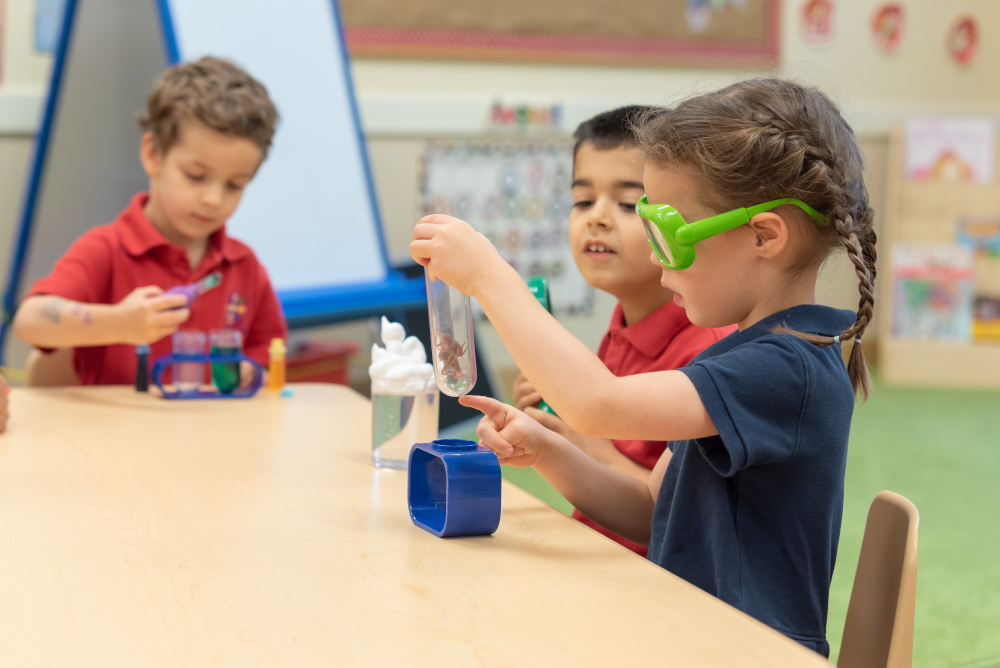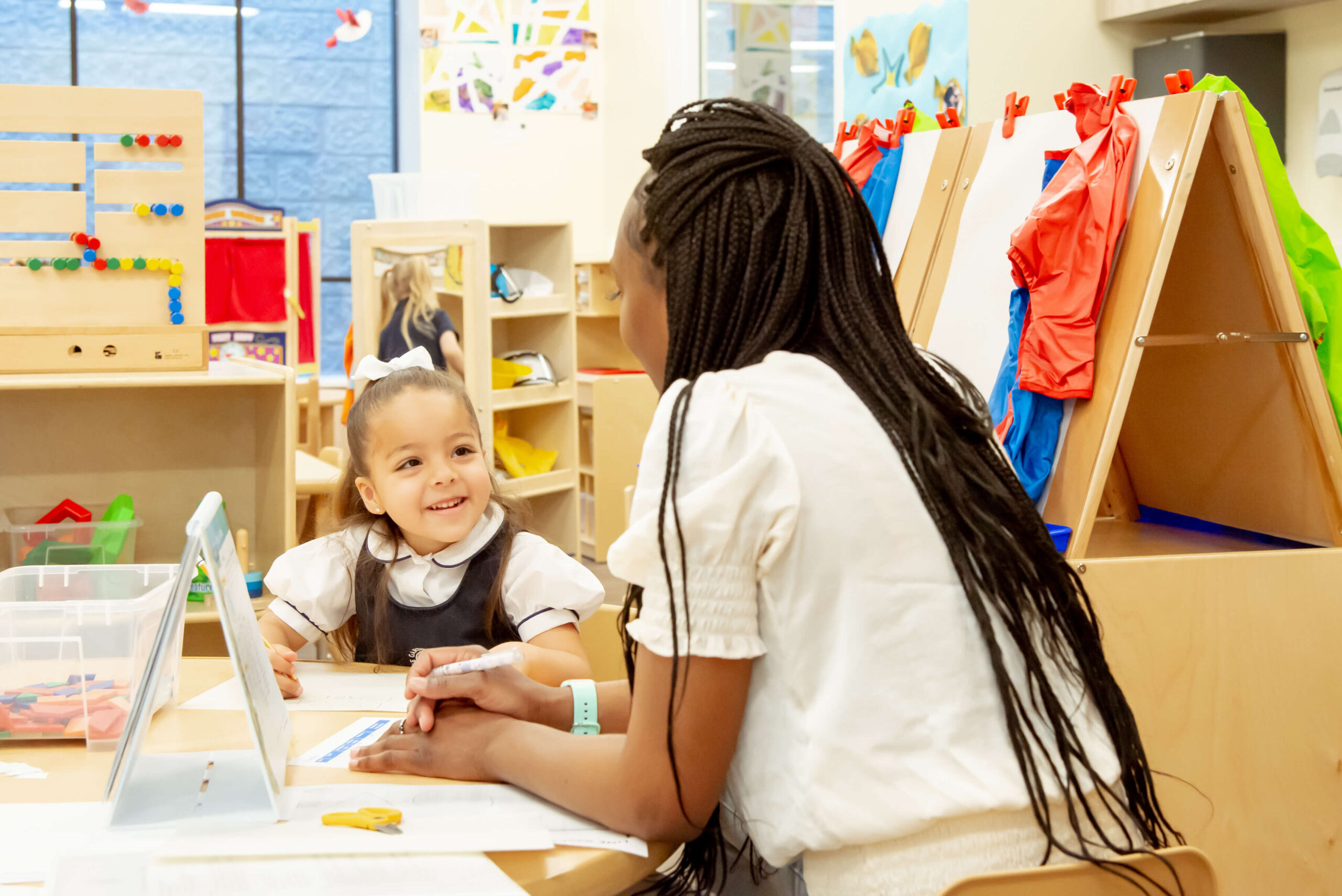
With spring in full swing, little ones may start to show a little more interest in the world outside their windows. Preschoolers are world-champion puddle jumpers, mud slingers, frog spotters, and flower pickers. When they have the opportunity to interact with the natural world, they’re actually learning the building blocks of the sciences. Biology, chemistry, and physics are all at play when a toddler is exploring and interacting with their surroundings.
In recent years, there’s been increased focus on science and S.T.E.M. or S.T.E.A.M.-related learning at all levels of education (Science, Technology, Engineering, Art, and Math), and that renewed focus is present with our youngest learners as well. As a discipline, science is an extension of a child’s natural curiosity, and supporting that curiosity can be fun for you and your child. We’ve collected a few activities you can do with your preschooler to help them start building a scientific mind by asking questions about everything around them.
Start With Stories
If your little one loves narrative, it might be a good idea to get them excited about science by reading some stories with them. Classics like The Lorax help promote stewardship and respect for the planet by introducing a lovable character who “speaks for the trees.” Feel free to follow up after a few readings by asking your preschooler what they think the trees or other plants might say. It’s not too early to let them know that the actions we take can help the earth to thrive. Practice recycling together to emphasize the effect they can have on the world around them.
For a preschooler who’s always asking “why?” Mary Wissinger’s My First Science Textbook series helps introduce children to the building blocks of life: atoms! For most of us, the introduction to subatomic particles in high school came as a huge surprise. You can pave the way to higher-level S.T.E.M. instruction in later years by introducing children to these concepts at an early age. Even familiarity with words like “electron” and “neutron” can help later science courses feel less intimidating.
If your child loves biographies and true stories, Ada Twist, Scientist introduces children to the tale of young Ada, who loves asking questions about why things are the way they are. Asking “why” is the first step in the scientific method, and this book encourages children to try and figure out the world around them through questioning and experimentation.
Create a Chemistry Lab
It’s never too early to let preschoolers play with combining two or three things together to see how they interact. Very young children will show an early fascination with materials such as water, sand, and soil, and will often be entertained just exploring the physical properties of a substance. When children are a little older, it can be fun to combine these elements together. Start simply. What happens to salt or sugar when it is mixed into water? Does the same thing happen to flour or sand? Baking or cooking is a great way to help children understand how heat or cold can transform a material or mixture. When kids are ready, mixing ingredients such as baking soda and vinegar can be a recipe for messy fun. This is also a great time to introduce the concept of safety. Kid-sized safety goggles are a great start, as well as a strong reminder to not mix anything without asking an adult for help first.
Play Plant Pokemon
If your preschooler has a collecting instinct, he or she may be interested in going on nature walks to collect different species. Keeping a log of the different plant or animal encounters makes each trip outside a natural scavenger hunt. Feel free to collect fallen leaves or seed pods to keep in a box inside, or take a picture with your phone to remember the specimen. Slightly older children may be interested in the Seek app by iNaturalist. This innovate app lets a user snap pictures and “collect” plant and animal species in an online database. If you’re going on a trip with a different natural environment, the app can provide a way to showcase biodiversity. Help your child understand the concept of an ecosystem by explaining how each species interacts with another.
The Gardner School Supports S.T.E.M. or S.T.E.A.M.-focused Learning Activities
Children are natural adventurers and explorers, and supporting these instincts will prep them for more academically-focused S.T.E.M. or S.T.E.A.M. activities in the future. Whether your child loves making a mess in the kitchen, collecting a bevy of plants, identifying animals, or bouncing different types of balls, all these actions are precursors to scientific inquiry. You can support your child’s curiosity by enrolling them at The Gardner School, an academic preschool that places an emphasis on S.T.E.M. and S.T.E.A.M. instruction. Contact us today to schedule a tour and learn more about what we can bring to your child’s educational journey.




